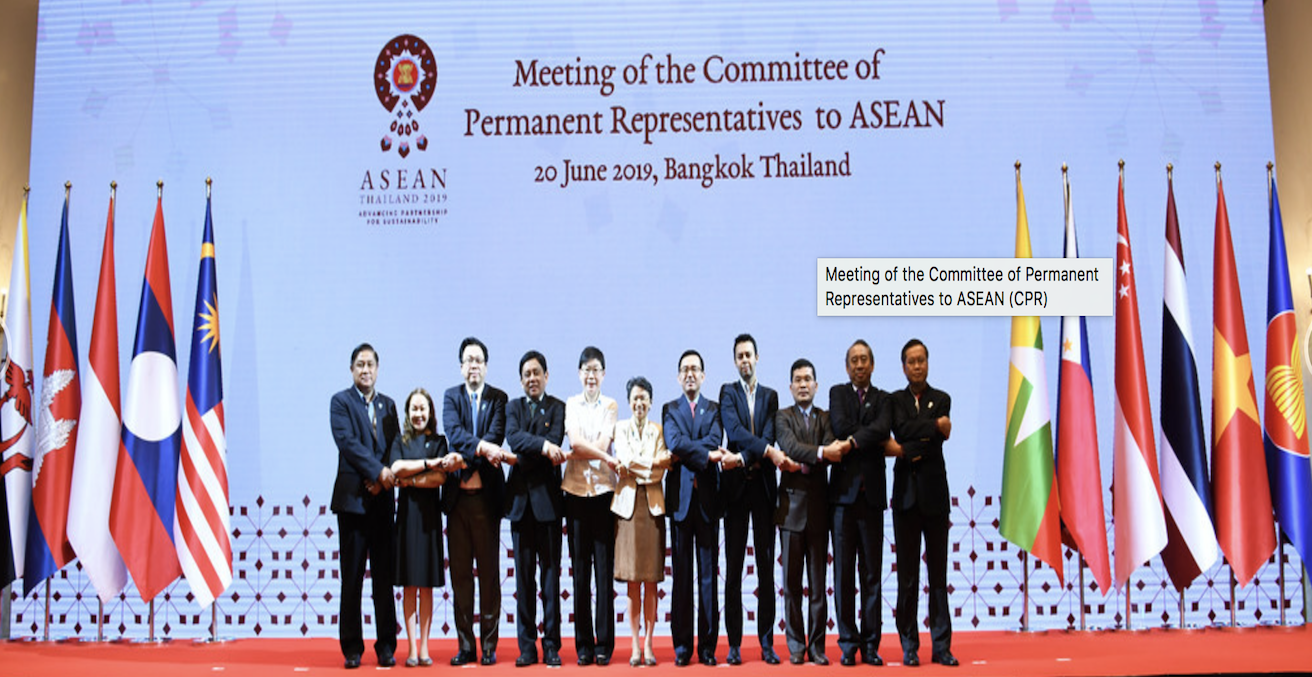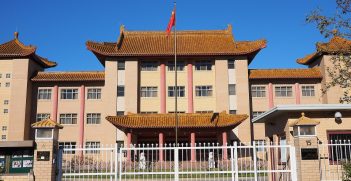Navigating Economic Integration amidst US-China Strategic Competition and Rising Uncertainties

Over the past 52 years, ASEAN coined various initiatives which have contributed to regional economic integration. Against the backdrop of rising US-China strategic competition, is the organisation able to help the ASEAN member states further pursue their economic integration?
Like other parts of the world, Southeast Asia has been witnessing the strategic competition between the US and China — the world’s largest and second-largest economies —which has manifested in a series of spats such as the tariff escalations and Washington’s ban of Chinese technological giant Huawei. Although bilateral trade talks are set to resume on 10-11 October, the jury is still out on the exact outcome.
While some observers contend that such contestation creates windfalls for certain sectors of Southeast Asian economies, one should not dismiss the uncertainties the US-China spat has been generating. For instance, their continuing dispute and rapidly changing bilateral negotiation dynamics will further erode investors’ confidence as these players usually adopt a wait-and-see approach in such environment. This in turn can arrest the growth and deepening of some transnational supply chains. Also, their dispute can be escalated to the point of economic decoupling, this can entail compartmentalisation of transnational production networks. This outcome would not bode well for ASEAN because their economies are embedded in global value chains. As a result, these governments are grappling with how a decoupling will look and the impacts it will have on their countries.
The above elements render the examination of the ability of ASEAN as an international institution fostering the region’s economic future. A pressing question becomes: “Is ASEAN able to help regional states further pursue their economic integration against the backdrop of rising uncertainties?”
To answer this question, one needs to look at the economic governance which the organization has created and fostered in the past 52 years. ASEAN has come a long way since the signing of the Preferential Trading Arrangement in 1977 which governed trade in goods only. The Declaration of ASEAN Concord II (Bali Concord II) endorsed by the ASEAN Leaders in 2003 envisioned the formation of ASEAN Communities, namely the ASEAN Security Community, the ASEAN Economic Community (AEC) and the ASEAN Socio-Cultural Community. The governments in January 2007 shortened the AEC’s deadline from 2020 to 2015. They in November 2007 also adopted the AEC Blueprint containing core elements and priority actions which the member states must implement to accomplish “a single market and production base, a highly competitive economic region, a region of equitable economic development, and a region fully integrated into the global economy.”
While AEC was formally established on 31 December 2015, regional economic integration continues. The AEC Blueprint 2025 was adopted in 2015. This document outlines AEC 2025’s objectives which are: “(i) A Highly Integrated and Cohesive Economy; (ii) A Competitive, Innovative, and Dynamic ASEAN; (iii) Enhanced Connectivity and Sectoral Cooperation; (iv) A Resilient, Inclusive, People-Oriented, and People-Centred ASEAN; and (v) A Global ASEAN.” Several schemes were launched to reach AEC 2025’s goals. For instance, one initiative to achieve “Global ASEAN” is the Regional Comprehensive Economic Partnership (RCEP), a free trade agreement (FTA) among ASEAN economies and Australia, China, India, Japan, South Korea, and New Zealand. This bloc is purposed to consolidate the five existing ASEAN+1 FTAs into a single contract.
Are the schemes above able to help regional states weather this period of uncertainties? My answer is positive but moderate. While these initiatives have potential to advance integration, they contain particular obstacles which can prevent future regional economic deepening. First, although they have successfully eliminated tariffs in ASEAN, research commissioned by the European Union-Asean Business Council (EU-ABC) and the Asean Business Advisory Council (Asean BAC) reveals that the number of non-tariff measures (NTMs) soared in the 2000-2016 period. This reflects that ASEAN’s attempt to abolish NTBs have been unsuccessful. The NTB problem yields serious implications on the future of regional economic integration. For example, such barriers partly accounted for stagnant intra-ASEAN trade and obstructed the progress in several areas such as services liberalisation and international labour movement. Also, the scale of damage inflicted by NTBs is large. It is because these barriers tend to hurt micro, small and medium enterprises (MSMEs) – the backbone of ASEAN economies – more than conglomerates. MSMEs account for more than 90 percent of all companies in Southeast Asia, employ between 75 to 90 percent of the region’s non-agricultural labour force, and contribute between 30 to 53 percent of ASEAN economies’ GDP. To elaborate, conglomerates possess greater resources, enabling them to absorb the costs of NTBs. For example, new product standards require firms to adjust their products to pass such standards. Bigger companies usually afford adjustment costs (e.g. using upgraded input materials, buying testing facilities to test their good before exporting). In contrast, MSMEs tend to pass these costs to end-consumers and suffer a market share loss because the prices of their goods increase. Also, while ASEAN designed the procedures for abolishing NTBs, the progress has been painstakingly slow. This helps explain a continuous surge of NTMs since 2000.
Second, RCEP talks have been ongoing since the negotiation commenced in 2013. The deadline of the conclusion was repeatedly pushed back. Even though Australia’s leader negotiator mentioned two weeks ago that “all ministers including India reiterated their commitment to concluding the negotiations in full by the time of the leaders summit in November,” some RCEP watchers still doubt the prospect of sealing the deal next month. It is mainly because there exist certain preference divergences and different levels of ambitions among the negotiating parties. For instance, Australia, New Zealand, Japan, and South Korea push for stronger intellectual property protection and investment liberalisation and protection while particular RCEP members are less keen to move into that direction. Also, although the RCEP participants agreed in principle to pursue services liberalisation, some players have yet offered concessions in this area.
In sum, ASEAN has several initiatives which helped advance regional economic integration, but hurdles remain. As shown above, the NTB issue is becoming more serious and RCEP negotiation possesses several sticking points. To move forward, political will is required. Facing rising uncertainties, now is time for regional states to act together.
Dr. Kaewkamol Karen Pitakdumrongkit is deputy head and assistant professor at the Centre for Multilateralism Studies at S. Rajaratnam School of International Studies (RSIS) of Nanyang Technological University, Singapore.
This article is published under a Creative Commons Licence and may be republished with attribution.





